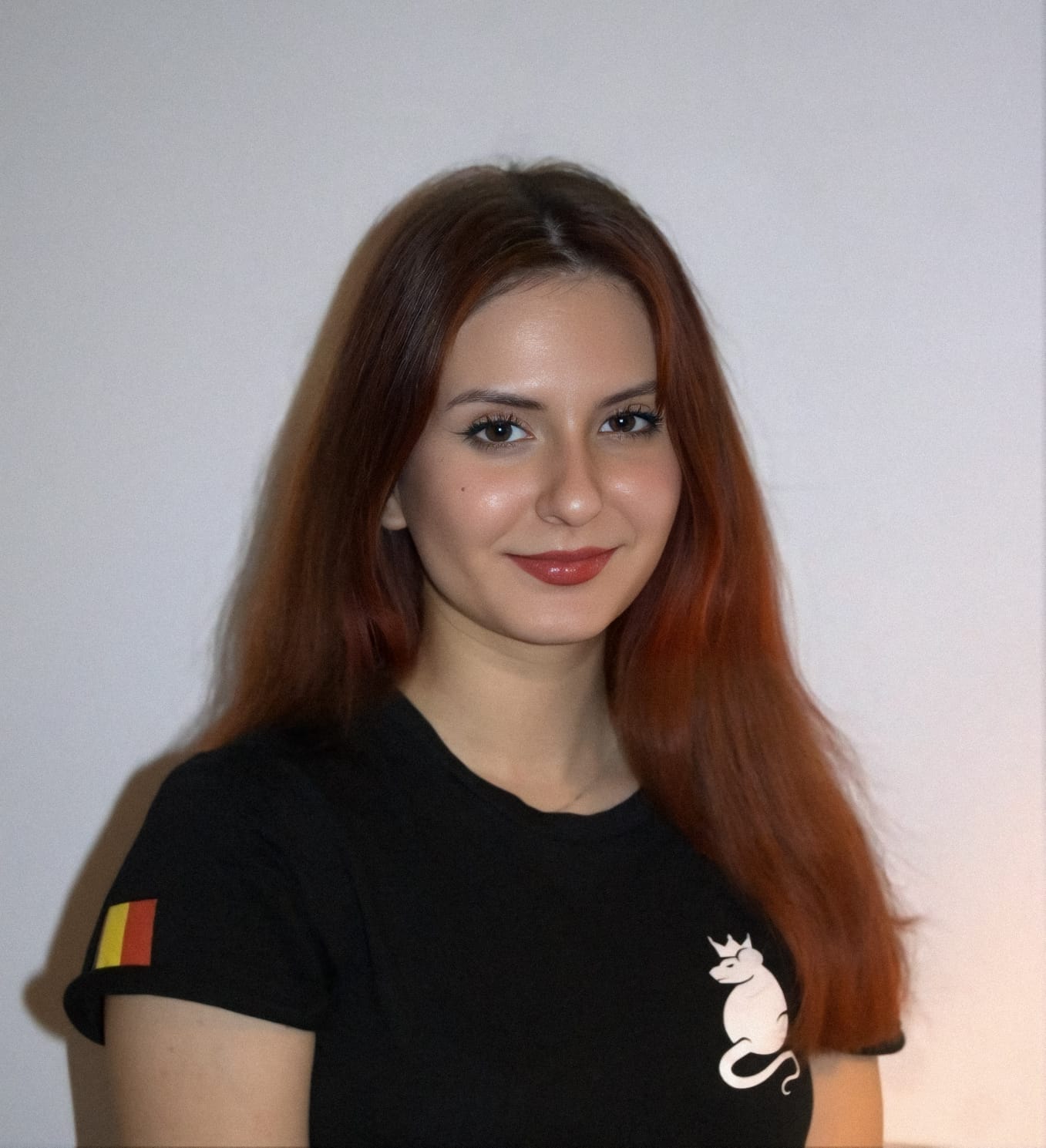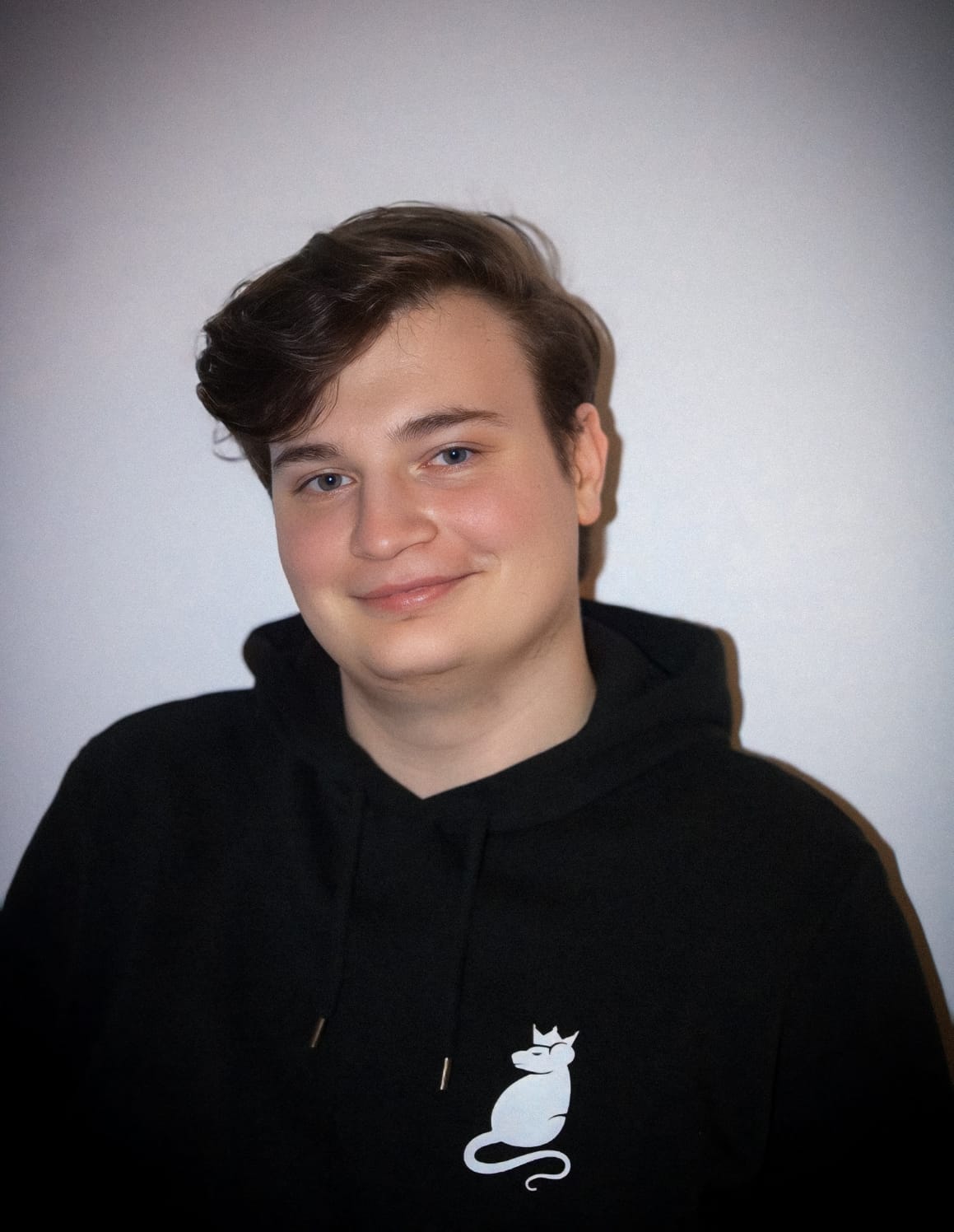Competitions
Over forty events from robotics to space tech. Each one taught us to move faster, fail smarter, and make hardware behave under pressure.

About Shobolinsky
It started in 2021 in a room full of wires, coffee cups, and smoke from a board that definitely was not supposed to smoke. Two people, one soldering iron, and a lot of stubbornness. No funding, no plan, just a shared instinct to build until something worked.
What began as chaos turned into a method. We are not opposites. We are matching frequencies of madness. Kristóf builds structure from storms. Atena is the storm that keeps the sparks alive. The overlap is where the impossible starts working.
Shobolinsky began as a small experiment that refused to stay small. We built machines that did not care about budget limits or reasonable deadlines. Failure was just a stage in the design process. Every broken prototype became a lesson. Every spark was progress.
Competitions turned into laboratories. ESA hackathons, CanSat and Rocketry Championships, BattleLab Robotica, Robochallenge, and everything in between. Over forty competitions later, we still show up the same way: undercaffeinated, overconfident, and ready to build something that barely makes sense until it suddenly does.
When Atena joined in 2023, the energy shifted. She is chaos in human form, a whirlwind of creativity and motion that never runs out of ideas or courage. Kristóf is structured chaos, the one who takes that creative explosion and turns it into something that boots, flies, or survives a field test. Both chaotic, both relentless, but in completely different orbits that somehow sync up. Together we are two unstable forces that stabilize each other just enough to build something real.
Today, Shobolinsky builds systems meant to survive extremes. Modular rovers, AI accelerators, and onboard brains for machines that work where humans cannot. We turn impossible ideas into working prototypes, then into research, then into tools. The story is still being written, but at least now we document the smoke before it clears.
Over forty events from robotics to space tech. Each one taught us to move faster, fail smarter, and make hardware behave under pressure.
Coral, Lunomyss, and the Great Coral Reef turned from prototypes into papers and proof-of-concepts for edge AI and exploration hardware.
The roadmap leads to space. Contracts, collaborations, and missions with ESA and partners who believe in small teams that move fast and build smarter.
Two halves of the same storm. One ignites, the other stabilizes, both obsessed with making things that should not work but somehow do.

Co-Founder
Atena is chaos distilled into a person. She never walks, she accelerates. Every idea she touches mutates into a project. She thrives in motion, pulling new designs, experiments, and challenges into existence. If Kristóf brings order, Atena brings the reason it needs to exist. Together, their chaos feeds off itself until something incredible emerges.

Founder
Kristóf is structured chaos personified. He brings order to storms, turning scattered ideas into blueprints and working systems. He is the one who finds the version that works when everyone else stops trying. A perfectionist trapped in a hurricane, he makes the chaos run on schedule, even if it means rewiring the clock.
Together they form a stable kind of instability. Atena fuels the fire, Kristóf shapes it into something that flies. Two chaotic minds, one shared rhythm. The reason Shobolinsky exists is simple. When two storms collide, you get thunder.
Chaos as ignition: Creation begins with noise. We do not wait for calm. We start building, break things, and refine the wreckage until it works.
Structure as propulsion: Order comes later, usually after the smoke clears. We turn chaos into circuits, sketches into products, and impossible deadlines into working prototypes.
Fun as gravity: If it is not fun, it does not last. Engineering is play that sometimes sets off alarms. We build because it feels alive.
Next missions: Shobolinsky is scaling up. Embedded systems, edge AI, and exploration hardware for near-space and beyond. The next prototypes are already running somewhere under a heat lamp.
Somewhere between burnt fuses and conference badges lives the Impact Log. It’s our unofficial list of moments when the chaos accidentally worked. Highlights include surviving the EDHPC stage lights, out-coding postdocs at an ESA hackathon, and proving a 5-watt AI cluster could outthink a server rack.
Entry #37: Still no casualties. Minor smoke. Major applause.
The lab journal is equal parts engineering diary and evidence log. It holds the truth about what really happened at 3 a.m. when the rover arm tried to punch a wall. Notes include things like “don’t trust the left wheel,” “Atena was right again,” and “it only exploded a little.”
Current status: stable voltage, unstable sleep schedule.